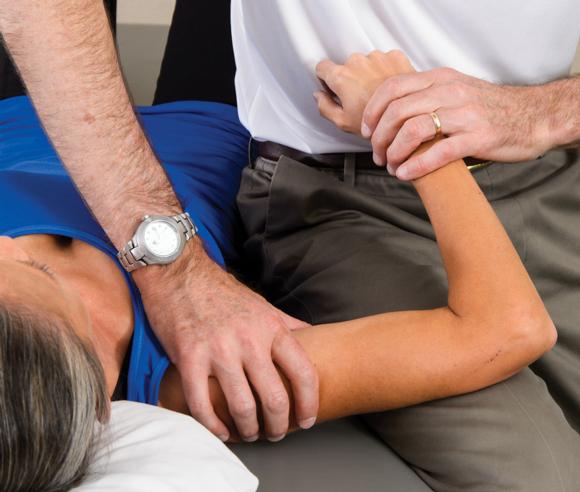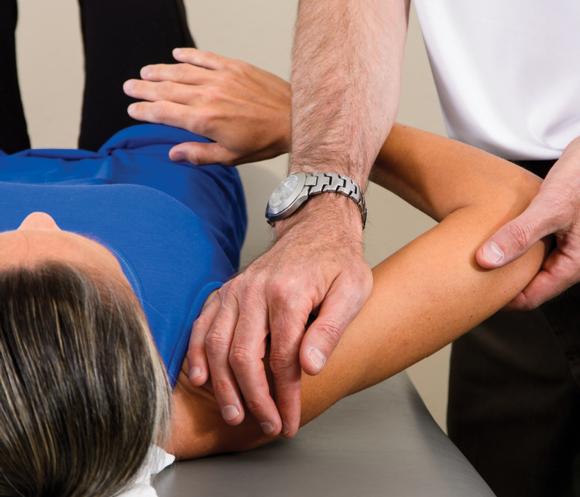Improve shoulder internal rotation range of motion for throwing athletes
This is an excerpt from Sport Therapy for the Shoulder With Online Video by Todd S Ellenbecker,Kevin E Wilk.
Methods to Improve Shoulder Internal Rotation (IR) Range of Motion (ROM) in the Throwing Athlete
Now that interpretation of glenohumeral joint ROM has been discussed, this section outlines specific techniques to increase IR ROM in the patient with shoulder dysfunction. This section, addressing the importance of accurate ROM measurement and clinical decision making based on the latest scientific evidence, can guide the clinician through the rehabilitation process; one can encounter a large spectrum of mobility issues when treating the patient with glenohumeral impingement. To further illustrate the role of ROM and passive stretching during this phase of the rehabilitation, figures 5.4 and 5.5 show versions of clinical IR stretching positions that use the scapular plane and that can be performed in multiple and varied positions of glenohumeral abduction. Each inherently possesses an anterior hand placement, used to exert varying degrees of posterior pressure to minimize scapular compensation and also to provide a checkrein against anterior humeral head translation during the IR stretch because of the effects of obligate translation.

Internal rotation range of motion technique in the scapular plane with 30° of elevation with scapular stabilization.

Internal rotation range of motion technique with scapular stabilization and 45° of glenohumeral joint elevation in the scapular plane. Note that the amount of elevation used with this stretch can be varied from as little as 0⁰ to 10⁰ all the way to 90⁰.
Research by Izumi and colleagues (2008) showed that large strains occurred in the posterior capsule in a stretching position of 30⁰ of elevation in the scapular plane with IR. These researchers compared many positions of shoulder ROM to determine what position optimally placed stress on the posterior capsule. The internally rotated position with the shoulder elevated 30⁰ in the scapular plane produced very acceptable levels of posterior capsular strain and would be highly effective for clinical use. These stretches for the posterior capsule and muscle - tendon unit (posterior shoulder stretches) can be used in a proprioceptive neuromuscular facilitation (PNF) contract - relax format following a low-load prolonged stretch-type paradigm to facilitate the increase in ROM (Sullivan et al. 1982, Zachezewski & Reischl 1986).
Find more stretches to address IR ROM in Sport Therapy for the Shoulder.
More Excerpts From Sport Therapy for the Shoulder With Online VideoSHOP

Get the latest insights with regular newsletters, plus periodic product information and special insider offers.
JOIN NOW


